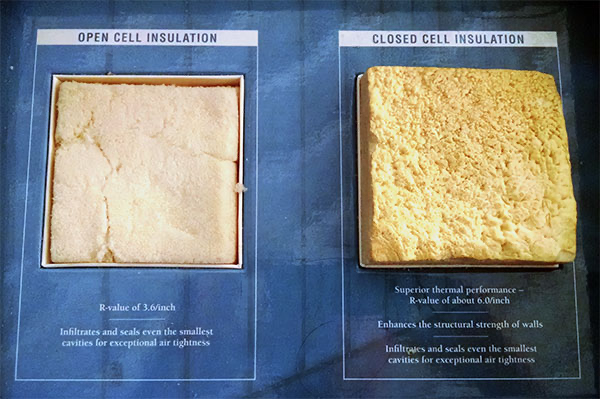Open VS Closed Cell Spray Foam
There are two main options when talking about spray foam insulation. A builder or homeowner can either choose between open-cell or closed cell spray foam. What is the difference? How do you choose which is the right option for you? That’s what we are here for!
Open-Cell Spray Foam
Open-Cell spray foam is lower density type of foam, it is applied to provide continuous insulation and as an air sealing barrier. This type of spray foam can be applied to walls, unvented attics, ducts and ceilings, and lastly vented attics and crawl spaces. Open-cell spray foam is great for sealing airflow through cracks, joints and seams by filing the cavities of these areas. The R value of this spray foam option is R-3.5 to R-3.6.
Also read: Spray Foam Myths Debunked
Closed-Cell Spray Foam
Closed-Cell spray foam has much more density than that of open-cell foam, it has a density of 1.75 pounds per cubic foot or more. Closed-Cell spray foam has a tremendous R value of R-6.5 to R-7. Closed-cell foam also adds to the structural strength of a ceiling, wall or roof because of its density and glue-like adherence. This makes it extremely useful for sealing air leaks at attic side-of-partition top plate and rim joists.
Check out this video for an in depth look at open and closed cell spray foam!
So which spray foam will work the best for you? Well not all foams are created equal, so it depends on the application you need it for. Spray foam insulation, regardless of what type, is going to create an air seal and insulate your home. We hope this article helped you in your process of choosing which insulation option you would like to go with!
We are also providing high quality truck bedliners and waterproofing services you would like surely.

